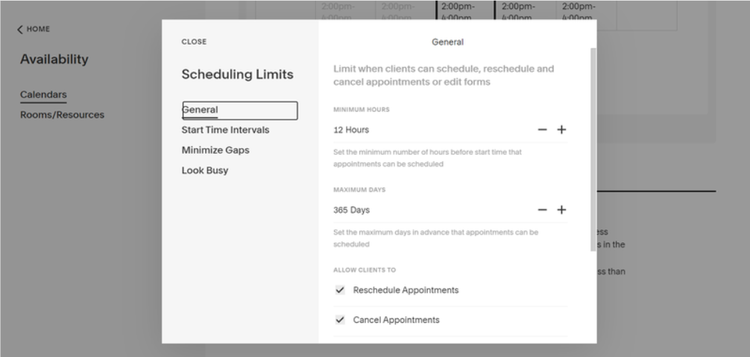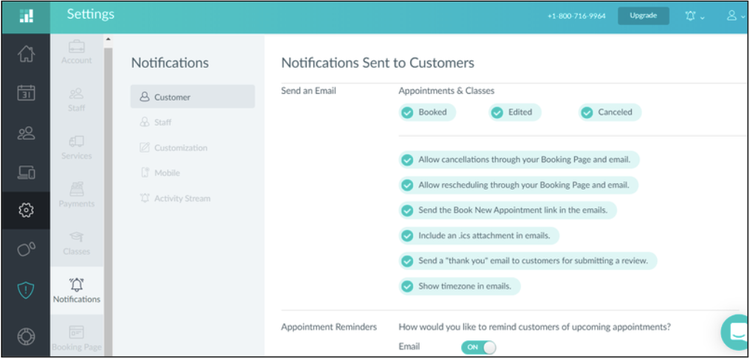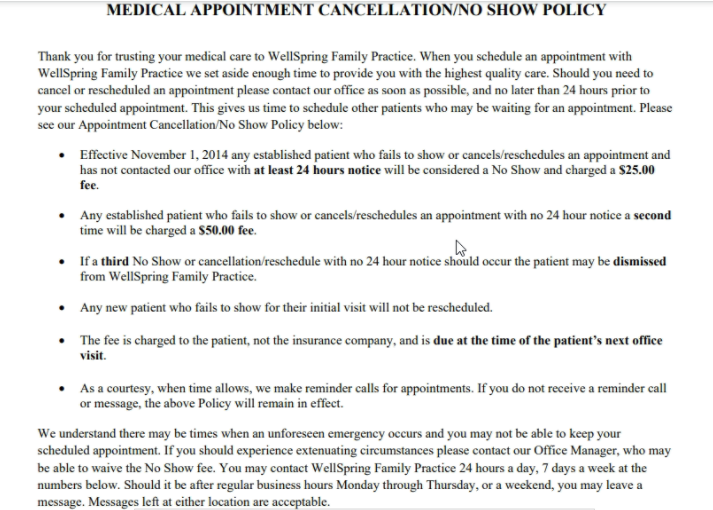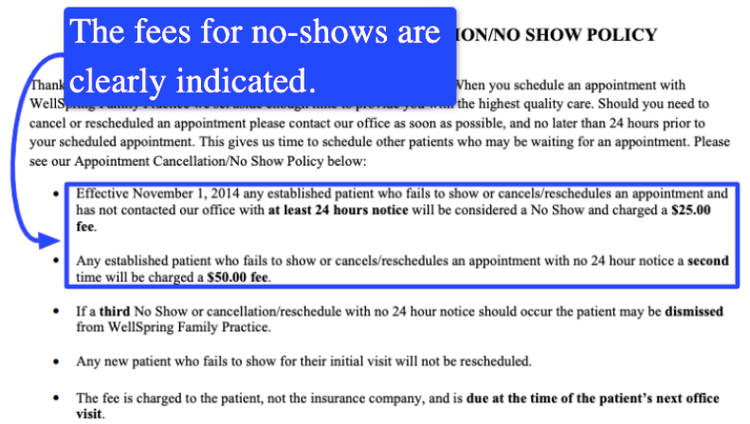Patient no-shows are unavoidable. Even if you send multiple reminders via email, phone calls, text messages (or messenger birds, even), some people will still miss their appointments.
What’s worse, the no-shows can hurt your revenue big time. After all, even if patients don’t show up, your clinic still covers expenses, such as rent, utilities, equipment costs, and staff salaries.
Studies reveal that patient no-shows cost the U.S. healthcare system a whopping $150 billion per year and an average of $200 for each individual physicians’ unused time slots.
The figures give us a vivid picture of the importance of no-show policies. Without one, you put your medical practice at a huge disadvantage.
Overview: What is a no-show policy?
A no-show is when a patient misses their scheduled appointment without informing your clinic. These are different from canceled appointments, where patients give notice prior to their nonappearance.
A no-show policy is the set of guidelines, rules, and penalties that a practice implements to manage patients who intentionally or unintentionally miss their appointments. The policy discourages your patients from missing their appointments and reduces the adverse impact of no-shows on your clinic.
Benefits of making a no-show policy
There are several advantages your clinic can enjoy from establishing a no-show policy.
1. Streamline your process of handling no-shows
Implementing a no-show policy helps your staff know what to do when patients don’t show up for their appointments.
With the policy, your employees can limit patient scheduling disruptions, handle follow-ups and rescheduling efficiently, and even fill empty time slots more quickly so your practice won’t miss out on the income potential for that time window.
2. Discourage patient no-shows
Since a no-show policy informs patients of the fees they will incur if they don’t show up, it discourages them from missing their appointments. Without a no-show policy, patients have no accountability whatsoever that will encourage them to go to your clinic.
3. Minimize revenue loss
The fewer no-shows your practice has, the fewer disruptions there are to your workflows; your patient and team scheduling would run smoothly; and, ultimately, you’ll be more profitable.
Ideally, every appointment you set should bring you money. If your patients don’t show up for their appointments, you don’t get paid -- that is unless you have a no-show policy in place.
How to create an effective no-show policy
Follow the tips below to create a no-show policy that encourages your patients to show up for their appointments.
1. Provide a cancellation window
Allow a timeframe for patients to cancel or move their appointments without getting penalized. Do this by using an appointment scheduling software, such as Acuity. The tool allows you to set a minimum number of hours before an appointment that patients can still cancel or reschedule their bookings.

Use the right appointment scheduling software to provide a cancellation and rescheduling timeframe for patients who book with your clinic. Image source: Author
When you add an appointment cancellation window in your no-show policy, you show your practice to be understanding and caring. That’s good for business, of course. You don’t want to be viewed as a medical practice that nickels-and-dimes its patients, always eager to charge fees and collect money.
2. Establish your fees
To easily create a policy in minutes, download a generic no-show policy online, then change pertinent sections to fit your practice. Among the many sections you should change are the fees.
These are the common fee-related sections you can customize.
- Straight fee: Every time patients miss their appointments, they are charged a no-show fee or they pay a set amount if they’re a certain number of minutes late.
- Reward system: Patients who show up on time and keep their appointments can get rewards, such as gift cards or other incentives (depending on your practice). This encourages them to be on time for their appointments.
- Fee erased upon return: A small fee is added to your patients’ bills when they don’t show up for their appointments. If patients reschedule and arrive on time, the fee is removed.
3. Enforce a no-show limit
Besides charging a fee, implement a rule that prevents patients from rescheduling if they exceed a specific number of missed appointments.
For instance, if you set a no-show limit of three appointments and your patient fails to show up for the fourth time, restrict their online or over-the-phone booking privileges.
Send patient no-show letters to remind repeat offenders of the importance of keeping their appointments, and follow up on patients if they need to reschedule. Doing so discourages patients from missing their appointments without canceling, can minimize no-shows, and can reduce potential costly disruptions to your clinic’s workflows.
4. Send reminders
Patients can sometimes forget their appointments, hence the no-shows. Prevent a good chunk of no-shows by calling patients a few days before their schedule or sending them quick reminders.
Streamline patient reminders using automated software, such as Setmore. The software lets you send automated appointment reminders.

Streamline sending patient reminders using automated emails. Image source: Author
Setmore also lets you send automated notifications of your patient appointments to your staff. This keeps your clinic’s schedules organized and your employees and patients on the same page to avoid missed appointments.
If you prefer doing follow-ups over the phone or need to set up remote meetings for patients who need initial consultation, use free software, such as the Google Calendar scheduling tool. This tool lets you create patient appointment calendars and set up automated email notifications and alerts to your employees so they can remind patients of their appointments.
5. Communicate your policy
Ensure your patients know the consequences of missing appointments by communicating your no-call no-show policy. Below are a few common, yet effective, strategies to inform your patients about your policy.
- Display your no-show policy on your online booking portal so patients know the guidelines and associated fees if they miss their appointments without giving you notice.
- When patients set appointments over the phone, ensure your employees inform them about your no-show policy. Your staff can say something like, “We look forward to seeing you. If you need to cancel your appointment, please do so within the next 24 hours to avoid getting charged the no-show fee of $25.”
- Include your no-show policy on your website so your patients can access it easily. To get more bookings, add a link to your appointment form or include your phone number so your patients can set appointments immediately.
Example of a no-show policy
The no-show policy from WellSpring Family Practice is a great example. It has guidelines and rules that you can build upon to reduce your no-shows.

Create a solid no-show policy to manage patients who miss their schedules. Image source: Author
The policy clearly indicates the fees patients are charged with if they fail to show up, cancel, or reschedule their appointment without giving the office at least 24 hours’ notice. It also includes the fee associated with repeat no-shows.

Include the fees and penalties for patient no-shows in your policy. Image source: Author
Make sure your patients fully understand the policy. Secure their complete information and signature as an agreement for the terms they are under.

Ensure your patients understand and agree to your no-show policy’s terms by providing a section where they have to affix their personal information and signatures. Image source: Author
Aside from the fees and conditions, the Wellspring Family Practice cancellation/no-show policy includes the clinic’s contact information. This shows patients where and how they can reach the practice to cancel or reschedule their appointments.
Minimize no-shows with the right policy
While no-shows are inevitable, you can keep them to a minimum by creating no-show policies. Once you have the policy in place, you will see an uptick in your profits, you’ll have smoother operations, and you can serve your patients more efficiently.
Our Small Business Expert
We're firm believers in the Golden Rule, which is why editorial opinions are ours alone and have not been previously reviewed, approved, or endorsed by included advertisers. The Ascent does not cover all offers on the market. Editorial content from The Ascent is separate from The Motley Fool editorial content and is created by a different analyst team.